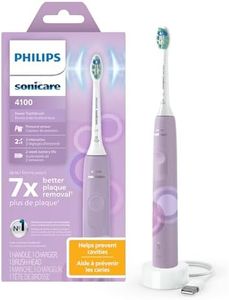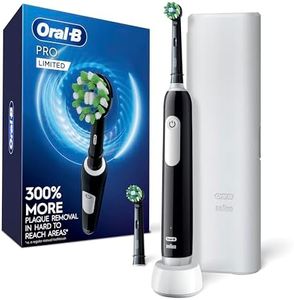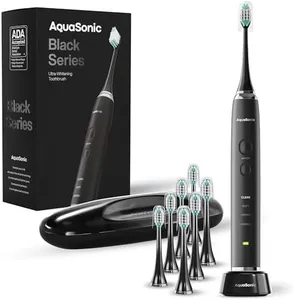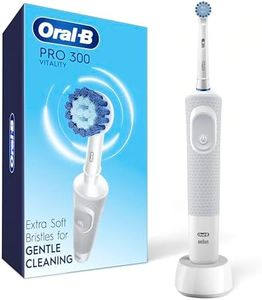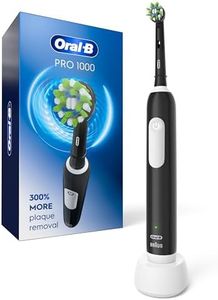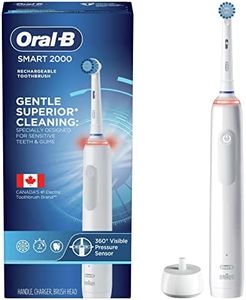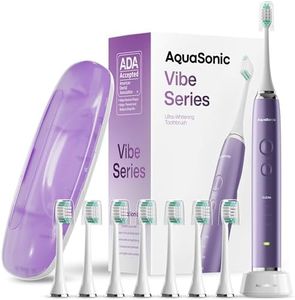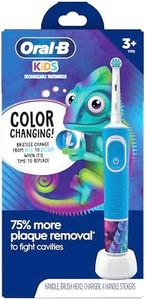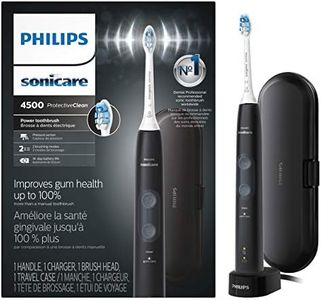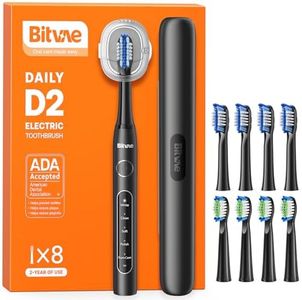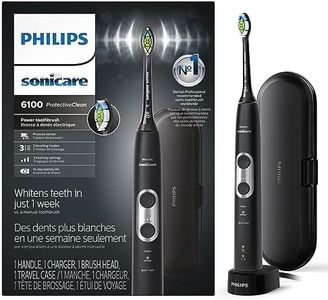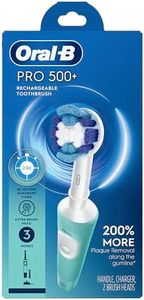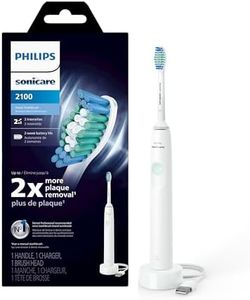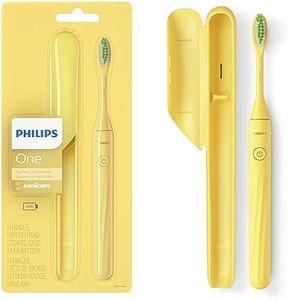We Use CookiesWe use cookies to enhance the security, performance,
functionality and for analytical and promotional activities. By continuing to browse this site you
are agreeing to our privacy policy
10 Best Good Electric Toothbrush
From leading brands and best sellers available on the web.Buying Guide for the Best Good Electric Toothbrush
Choosing a good electric toothbrush can make a big difference in your oral hygiene routine. The right toothbrush can help you clean your teeth more effectively, reach tricky spots, and even make brushing more enjoyable. When picking an electric toothbrush, it's important to consider features that match your personal needs, such as how sensitive your teeth and gums are, how easy the brush is to use, and what kind of cleaning modes you might benefit from. Understanding the key specifications will help you make a choice that keeps your teeth healthy and your brushing routine simple and effective.Brushing ModesBrushing modes refer to the different settings an electric toothbrush offers, such as daily clean, sensitive, gum care, whitening, or deep clean. These modes adjust the speed and movement of the brush to suit different needs. If you have sensitive teeth or gums, a gentle or sensitive mode can make brushing more comfortable. If you want to focus on stain removal, a whitening mode might be helpful. For most people, a basic daily clean mode is sufficient, but if you have specific dental concerns, choosing a brush with multiple modes can give you more flexibility.
Brush Head CompatibilityBrush head compatibility means which types of replacement heads can fit onto the toothbrush handle. Some brushes only work with their own brand's heads, while others offer a range of shapes and bristle types for different needs, like sensitive teeth or orthodontic care. It's important because being able to choose the right head can improve your brushing experience and effectiveness. If you have specific dental needs, look for a toothbrush that offers compatible heads designed for those concerns.
Battery LifeBattery life tells you how long the toothbrush can run before it needs to be recharged. Some brushes last only a few days, while others can go for weeks on a single charge. If you travel often or don't want to worry about charging frequently, a longer battery life is more convenient. For home use, shorter battery life may be fine if you can easily recharge it. Think about your routine and how often you want to deal with charging when making your choice.
Timer and PacerA timer and pacer are features that help you brush for the recommended two minutes and remind you to move to different parts of your mouth. The timer ensures you brush long enough, while the pacer usually buzzes every 30 seconds to prompt you to switch areas. This is important for thorough cleaning and building good habits. If you tend to rush your brushing or miss spots, a toothbrush with these features can help you improve your technique.
Pressure SensorA pressure sensor alerts you if you're pressing too hard while brushing, which can protect your gums and enamel from damage. Some sensors give a visual signal, while others vibrate or make a sound. If you have sensitive gums or tend to brush aggressively, a pressure sensor is a valuable feature to prevent over-brushing and keep your mouth healthy.
Ease of Use and GripEase of use and grip refer to how comfortable and simple the toothbrush is to hold and operate. Some handles are slim and lightweight, while others are bulkier or have textured grips for better control. If you have small hands, arthritis, or want a brush that's easy to handle, pay attention to the design and feel of the handle. A comfortable grip can make brushing easier and more effective.
Cleaning TechnologyCleaning technology describes how the toothbrush moves to clean your teeth, such as oscillating-rotating, sonic, or ultrasonic movements. Each type has its own way of removing plaque and debris. Oscillating-rotating brushes move in circles, while sonic brushes vibrate side to side at high speeds. Both are effective, but some people prefer the feel of one over the other. If you have specific dental advice from your dentist, follow their recommendation, otherwise choose the technology that feels most comfortable and effective for you.
